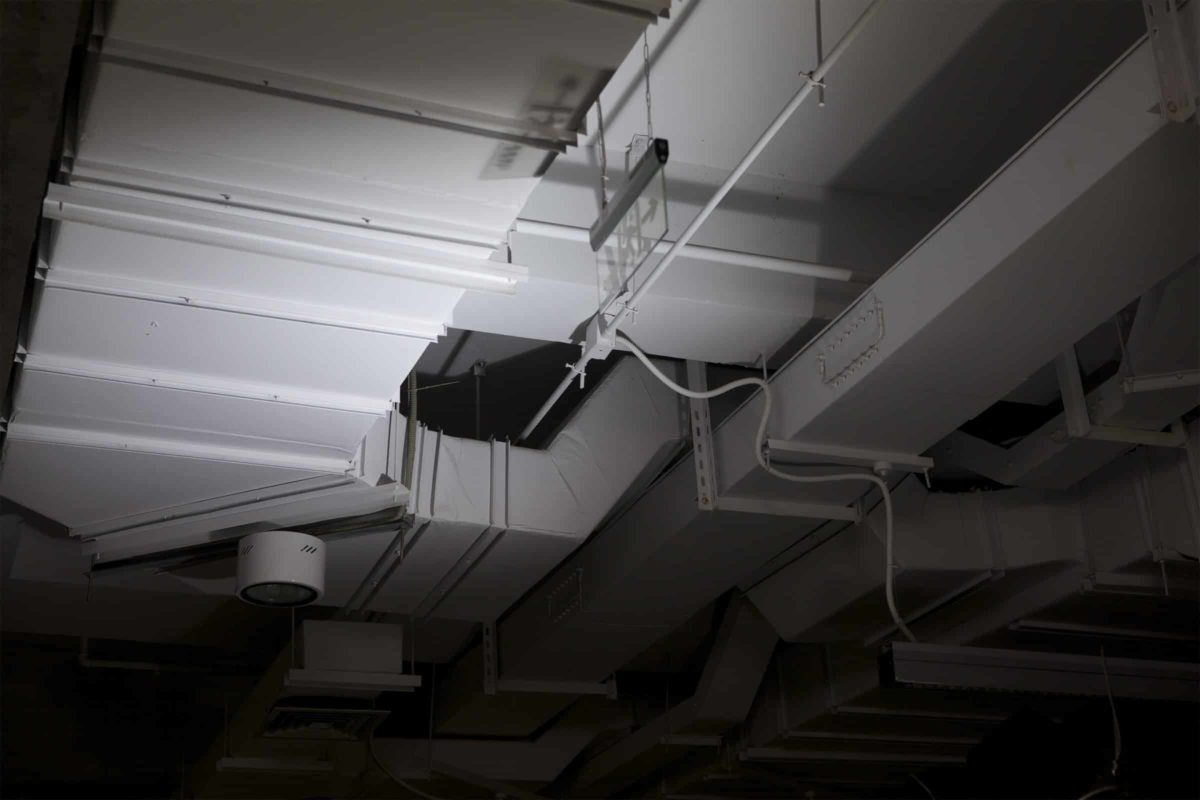Preventing Powdery Mildew

Cannabis crops are susceptible to a variety of potential issues in regards to molds and fungus. Powdery mildew is spread by airborne transmission, making the need for a continuous disinfection of the air systems necessary in order to prevent potential contamination. Mold and bacteria are microorganisms that attack and destroy crops and there are over 8,000 species of mold that affect plants1. The most common losses of crops can be attributed to Botrytis cinereal “Gray Mold” or Sphaerotheca macularis “Powdery Mildew.”
Growing rooms are perfect environments for not only producing cannabis crops, but also reproducing and spreading disease causing microbes thanks to the humidity that helps mold and mildew grow rapidly on plants and surfaces. Then, as a plant is infected, mold spores are released into the air and can be spread to other plants and surfaces. This issue is exacerbated by HVAC systems that continuously recirculate air and spread mold in a very rapid manner. Biofilms are also likely to grow inside of the ventilation systems as well, creating an ever-present reservoir of mold. Biofilms are an accumulation of microbial cells that are permanently associated (not removed by gentle rinsing) with a surface and bounded in a matrix of mostly polysaccharide material2. This structural makeup creates a formation that is very difficult to remove, that is why it is extremely important to try to prevent growth to begin with. If it is present, and left untreated, it will continuously grow mold, spread its’ spores within the growing room, and potentially infect and decimate the entire crop. The presence of biofilms also greatly reduces the energy efficiency of a system, and removal can dramatically improve cooling capacity for a facility.
Ultraviolet light disinfection systems can be placed directly within HVAC ducts to eliminate and prevent mold, mildew, and other organisms from forming and spreading within a facility. Ultraviolet light’s UV-C spectrum, specifically 265 nm, offer the greatest germicidal potential. When a microorganism is exposed to UV-C, the nuclei of the cells are altered due to photolytic processes. This process prevents further replication and causes cell death. So, any organism that the light is sufficiently exposed to, will die.
Placing UV-C disinfection units within the HVAC system are tremendously beneficial because a continuous disinfection cycle will be occurring, without placing harm to anyone present in the space. Units can be placed in the supply and the return to maximize the benefits. Units placed in the return ducts have an even greater benefit because of the slower air velocity which increases exposure time even further, maximizing kill. The use of ultraviolet light disinfection devices within HVAC units is a tremendous benefit within the cannabis industry because of the detriment mold and mildew has on crops. Spores are easily airborne, and once they are, they can travel distances and the issue can become widespread. By treating the air system, airborne transmission of spores that cause issues such as powdery mildew will be significantly reduced. The reduction of biofilms thanks to the use of UV-C light will also eliminate harmful organisms that are harbored within the system and improve energy efficiency. Ultraviolet light disinfection is an easy, hands-off, chemical free way to help reduce the risk of mold and mildew from developing. Without this harm to crops, there will likely be increased cannabis yields and an overall healthier product.
Emily Lorcheim, ClorDiSys Solutions, Inc.
- McPartland, J.M., Clarke, R.C., Watson, D.P. Hemp Disease and Pests – Biological Control. Chapter 1. CABI Publishing, 2000.
- Donlan, Rodney M. “Biofilms: Microbial Life on Surfaces.” Emerging Infectious Diseases8.9 (2002): 881–890. PMC. Web. 9 July 2018.

Installing Ultraviolet light into a whole-house system is definitely the way to go in long-run. I have an UV air purifier at home and I can attest the effectiveness against germs, bacteria or in this case mold and fungus.
Searching for the best product to improve one’s indoor air quality can be very tricky because there are so many options in the market, but knowing their uses is very helpful. Thank you.
Very impressive, thanks a lot for sharing a helpful post with us.